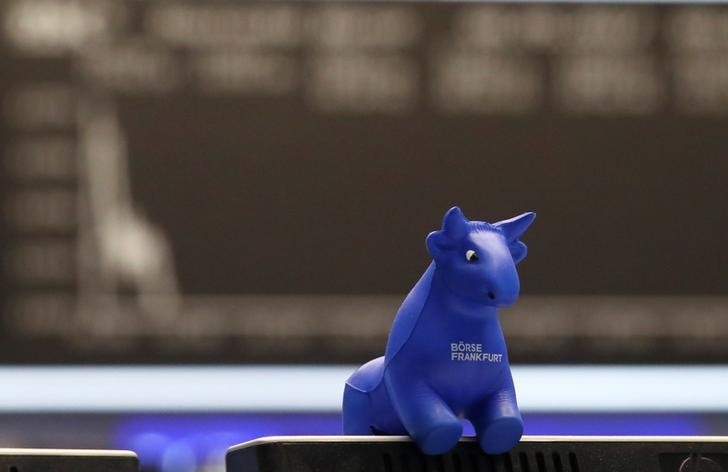Investing.com - European stock markets traded in a mixed fashion in tight ranges, as investors awaited key inflation data for guidance of the future path of global monetary policy.
At 03:10 ET (07:10 GMT), the DAX index in Germany traded 0.2% lower, while the CAC 40 in France rose 0.1% and the FTSE 100 in the U.K. gained 0.1%.
Inflation data looms large
European equities have retreated this week ahead of the release of a key inflation report from the eurozone, as investors weigh the shifting expectations over global rates.
Eurozone CPI is due for release later in the session, and is expected to show a slight tick higher to 2.5% on an annual basis in May, from 2.4% the prior month.
The European Central Bank is widely expected to cut interest rates next week, but there is uncertainty over what follows.
Markets are pricing in around 60 bps of cuts from the ECB this year, but data released earlier Friday showing German retail sales slumping 1.2% on the month in April indicated that consumers remain under stress in the eurozone’s largest economy.
Over in the U.S., there is more inflation data to study, in the form of PCE price index data, the Federal Reserve’s preferred inflation gauge, later in the station.
A downward revision to U.S. GDP on Thursday stoked expectations that the Federal Reserve has room to cut rates this year, but this may prove unlikely if inflation continues to be elevated.
Renault announces joint venture
In corporate news, Renault (EPA:RENA) stock slipped 0.3% after the French automaker and Chinese partner Geely announced a highly anticipated joint venture that will develop combustion and hybrid engines, hoping to improve the competitiveness of their legacy auto business.
JD (NASDAQ:JD) Sports Fashion (LON:JD) stock rose over 5% after the U.K. fast fashion retailer bounced back from a January profit warning with sales growth in both Europe and the U.S.
Crude weighed by demand concerns
Crude prices edged lower Friday, on course for monthly losses on persistent concerns that tight monetary policy will result in sluggish demand this year.
By 03:10 ET, the U.S. crude futures (WTI) traded 0.3% lower at $77.69 per barrel, while the Brent contract dropped 0.2% to $81.75 per barrel.
Both benchmarks are on course to drop around 2% in May.
U.S. oil inventories saw a bigger-than-expected draw last week, according to data released on Thursday, but gasoline inventories grew 2 million barrels, more than expected.
This raised concerns that demand in the world’s biggest fuel consumer was sluggish going into the travel-heavy summer season.
Additionally, weak Chinese manufacturing activity data ramped up concerns over sluggish demand in the world's biggest oil importer.
The Organization of the Petroleum Exporting Countries and allies, including Russia, a group known as OPEC+, is set to meet online over the weekend, with the cartel likely to extend ongoing production cuts past a June-end deadline.
